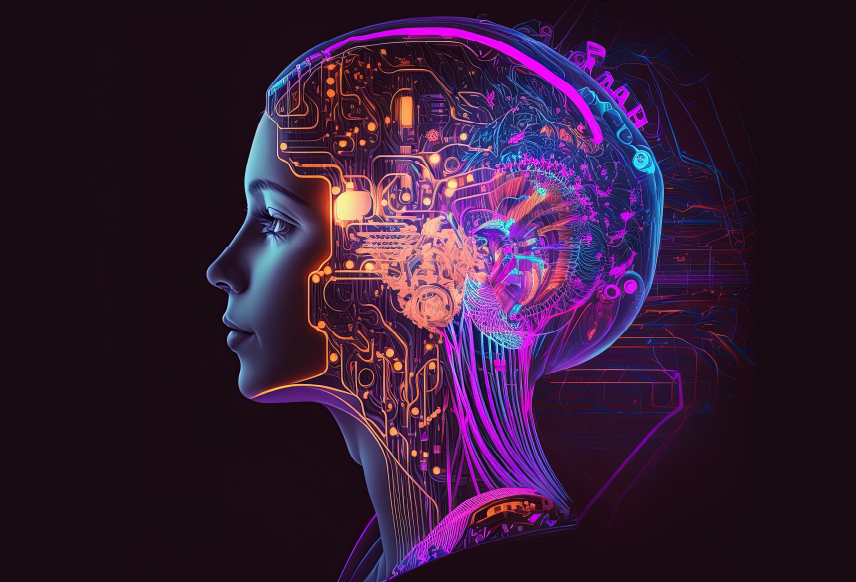
The world of eLearning has evolved rapidly, and it’s been fascinating to watch the evolution of the eLearning development process. The focus is now on making things happen faster and more efficiently. That’s why rapid eLearning development has become such a popular approach. Rapid eLearning development is a way of creating online courses in a shorter amount of time, which can be a real lifesaver when deadlines are looming. But even with rapid eLearning, there’s always room for improvement. So, how can you take it to the next level?
Well, let me explain. Consider a scenario where you are in a rush to prepare dinner for yourself, and you opt for a premade pasta instead of preparing it from scratch. Rapid eLearning is like that premade pasta. It’s quick and easy, but sometimes it needs something extra to make it really delicious. That’s where ChatGPT comes in. It’s like adding some fresh herbs and spices to your pasta to advance it from good to great.
In this blog post, we’re going to explore what rapid eLearning development is, its benefits, and how ChatGPT can help you speed up the process and make your courses even more effective. So, let’s get started!
What is Rapid eLearning Development?
Rapid eLearning is a way to build customized online courses that cuts down on development time and costs. With rapid eLearning, you follow instructional design principles and avoid adding extra bells and whistles. You use existing materials, like videos or training documents, to make things move quicker. You can also use tools and templates to streamline the process, all while maintaining an agile approach to project management.
This approach to eLearning development is not only faster, but it’s also more efficient. It can be a lifesaver when you need to deliver training to a large group of employees and when time is running out. It’s also great for training on content that changes frequently or doesn’t have a long shelf life. Additionally, it can help ensure everyone gets consistent training when you’re translating training into multiple languages across an organization.
Benefits of Rapid eLearning Development
Rapid eLearning development is all about speed and efficiency, and it has several benefits that are difficult to ignore. For starters, it can save you a lot of time. With traditional eLearning development, there’s a lot of waiting required to get approvals, make changes, and deal with technical difficulties. But with rapid eLearning development, you can create courses in a fraction of the time, so you can train your team faster.
Not only does rapid eLearning development save you time, but it can also save you money. With fewer hours spent on development, you’ll have lower labor costs. And because the tools are user-friendly, you won’t need specialized training or expertise, which can save you even more.
Another advantage of Rapid eLearning Development is that it can result in higher quality courses. With more time to focus on creating engaging content, rather than the technical aspects of development, you can produce more effective courses. And, with more time to focus on creativity, you can make sure your courses stand out.
Of course, not all organizations have the resources or expertise to create courses in-house. That’s where outsourcing comes in. Outsourcing eLearning development can be cost-effective, provide access to a broader range of skills, and result in faster development times. However, even with outsourcing, rapid eLearning development can still be a lengthy process.
Rapid eLearning development using ChatGPT can significantly reduce the cost of developing eLearning content, reduce development time, improve the quality of learning, facilitate learning personalization, enhance knowledge retention, and provide scalability to meet organizational needs.
ChatGPT4’s ability to generate high-quality content, provide expert analysis and insights, and handle images and long-form text helps create eLearning modules more quickly and efficiently than ever before, saving significant time and resources on content creation.

ChatGPT for Rapid Learning
That’s where ChatGPT comes in to help accelerate the process. With its ability to generate high-quality content, provide expert analysis and insights, and handle images and long-form text, ChatGPT can help you create eLearning modules faster and more efficiently.
So, whether you’re developing courses in-house or outsourcing to third-party vendors, ChatGPT can help you take Rapid eLearning Development to the next level. It’s like having a personal assistant that can help you get things done in record time!
How to Accelerate Rapid eLearning Development Process with ChatGPT
Rapid eLearning Development can be challenging, especially when it comes to content creation, personalization, multilingual support, and quality control. But with the advent of ChatGPT4, developers can now accelerate the process and create high-quality eLearning modules more quickly and efficiently than ever before.
Let’s explore how ChatGPT4 can be used to enhance the Rapid eLearning Development process:
1. Content Creation
Content creation is one of the most time-consuming aspects of eLearning development. Writing content from scratch can take hours, even days, and can be a drain on resources. However, with ChatGPT4, developers can input prompts or questions, and the AI will generate a human-like response based on the input. This can save significant time and resources, allowing developers to focus on other aspects of the development process.
For instance, if a company wants to create an eLearning module on customer service, a developer could input a prompt such as “what are some common customer service problems?” into ChatGPT4. It could then generate a response such as “some common customer service problems include long wait times, unresponsive customer service representatives, and unclear policies.” This response could be used as a starting point for the eLearning module, saving the developer time and resources.
2. Long-Form Content Creation
ChatGPT4’s content creation capability extends beyond short answers to long-form content creation. This means that developers can use ChatGPT4 to generate an entire eLearning course, complete with chapters and modules.
For example, a company that wants to create a course on project management could input prompts such as “what are the different phases of a project?” and “what are some common project management tools?” into ChatGPT4. The AI could generate an entire course on project management, complete with chapters on project initiation, planning, execution, monitoring, and closure.
3. Images as Inputs to Generate Content
ChatGPT4’s content creation capability also extends to generating content from images. Developers can input images into the platform, and the AI will generate relevant and high-quality content based on the image.
For instance, a developer could input an image of a graph into ChatGPT4, and it could generate content on data analysis and visualization. This feature can save significant time and resources in eLearning development, as developers can quickly generate content based on images.
Rapid eLearning development using ChatGPT can significantly reduce the cost of developing eLearning content, reduce development time, improve the quality of learning, facilitate learning personalization, enhance knowledge retention, and provide scalability to meet organizational needs.
ChatGPT4’s ability to generate high-quality content, provide expert analysis and insights, and handle images and long-form text helps create eLearning modules more quickly and efficiently than ever before, saving significant time and resources on content creation.
4. Personalization
Personalization is the process of tailoring content to meet the individual needs of learners. This can help increase engagement and retention rates. ChatGPT4 can help with personalization by generating content based on the individual needs of learners.
For example, if a company wants to create an eLearning module on sales techniques for introverted learners, a developer could input a prompt such as “what are some effective sales techniques for introverted learners?” into ChatGPT4.
The AI could then generate a response that is tailored to the needs of introverted learners, such as “effective sales techniques for introverted learners include active listening, asking open-ended questions, and focusing on the customer’s needs.” This personalized content can help increase engagement and retention rates among learners.

5. Create Assessments and Quizzes
ChatGPT4 can also be used to create assessments and quizzes for eLearning modules. Developers can input prompts or questions, and the AI will generate multiple-choice questions or fill-in-the-blank assessments.
For instance, a developer could input a prompt such as “what are some common project management tools?” into ChatGPT4. The AI could then generate a multiple-choice question with options such as Gantt charts, critical path analysis, and stakeholder analysis.
6. Create Interactive and Immersive Learning Experiences
Creating interactive and immersive learning experiences is one of the most effective ways to engage learners and improve knowledge retention. ChatGPT4 can be a powerful tool for creating such experiences, thanks to its ability to generate content quickly and efficiently.
a. Interactive eLearning modules
Interactive eLearning modules can help learners engage with the content in a more meaningful way. ChatGPT4 can generate prompts for different types of interactive modules, such as quizzes, games, and simulations.
For example, a company that wants to create a module on cybersecurity can input prompts such as “create a cybersecurity quiz” or “develop a cybersecurity simulation.” ChatGPT4 can then generate relevant content for the prompt, which can be used to create an interactive eLearning module.
b. Immersive eLearning environments
Immersive eLearning environments can transport learners to a different setting, allowing them to experience the content in a more realistic way. ChatGPT4 can generate prompts for immersive eLearning environments, such as virtual reality (VR) or augmented reality (AR) simulations.
For example, a company that wants to create a module on workplace safety can input prompts such as “develop a workplace safety VR simulation” or “create an AR module on hazard identification.” ChatGPT4 can then generate relevant content for the prompt, which can be used to create an immersive eLearning environment.
c. Adaptive eLearning
Adaptive eLearning is the process of tailoring content to meet the individual needs of learners. ChatGPT4 can generate personalized prompts based on the learner’s progress, interests, and preferences.
For example, a company that wants to create an adaptive eLearning module on leadership can input prompts such as “develop a leadership quiz that adapts to the learner’s progress” or “create a personalized leadership simulation based on the learner’s interests.” ChatGPT4 can then generate relevant content for the prompt, which can be used to create an adaptive eLearning module.
7. Multilingual Support
Another advantage of using ChatGPT4 for rapid eLearning development is its multilingual support. With ChatGPT4, you can generate content in multiple languages quickly and efficiently, which is essential for companies with a diverse workforce or those operating in multiple countries.
For instance, let’s say a global company wants to create an eLearning course on diversity and inclusion. With ChatGPT4, they can input prompts or questions in English and generate content in various languages, including Spanish, Mandarin, and Arabic. This can save a lot of time and resources and ensure that all employees, regardless of their language, receive the same high-quality learning experience.
Rapid eLearning Development Using ChatGPT: Impact on L&D
Let’s look at the impact of using ChatGPT for rapid eLearning development.
1. Cost-Effective
Rapid eLearning development using ChatGPT can significantly reduce the cost of developing eLearning content, making it accessible to organizations of all sizes.
2. Time-Efficient
Rapid eLearning development using ChatGPT can reduce the development time of eLearning content, making it possible to provide training to employees in a shorter time frame.
3. High Content Quality
The quality of eLearning content developed using ChatGPT can be improved by leveraging its capabilities to create engaging and interactive content.
4. Learning Personalization
The use of ChatGPT can facilitate the development of personalized learning content tailored to the individual learner’s needs and preferences.
5. Knowledge Retention
The use of ChatGPT can help to improve knowledge retention by creating more engaging and interactive content that is more likely to be remembered by learners.
6. Scalability
Rapid eLearning development using ChatGPT makes it easy to scale up or down eLearning content development as per the organization’s needs, making it more flexible and adaptable.

Final Word
While rapid eLearning development has revolutionized the eLearning industry, with the advent of ChatGPT, it’s now possible to further enhance the rapid eLearning development process. ChatGPT4’s ability to generate high-quality content, provide expert analysis and insights, and handle images and long-form text helps create eLearning modules more quickly and efficiently than ever before.
By using ChatGPT, developers can focus on other aspects of the development process while saving significant time and resources on content creation. The integration of ChatGPT4 can lead to improved course quality, personalized learning, and faster delivery of training, which can ultimately benefit organizations and learners alike.
Harbinger possesses significant expertise in generating content using ChatGPT through the vast library of prompts that have been created, and teams that are trained to write new prompts as needed. Further, our AI tool Quillionz, which is the world’s first AI-powered platform for creating questions, can be leveraged to accelerate the rapid eLearning development process.
For further inquiries about using AI tools like ChatGPT and to accelerate the rapid eLearning development process, reach out to Harbinger at contact@harbingergroup.com. Our eLearning experts will be happy to help you.






